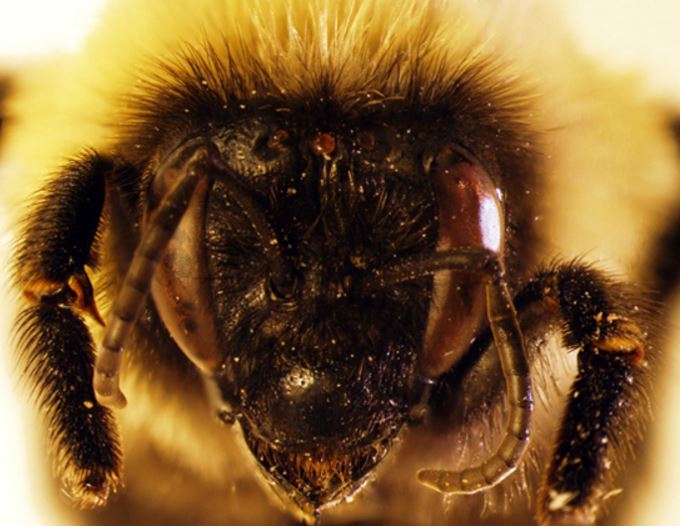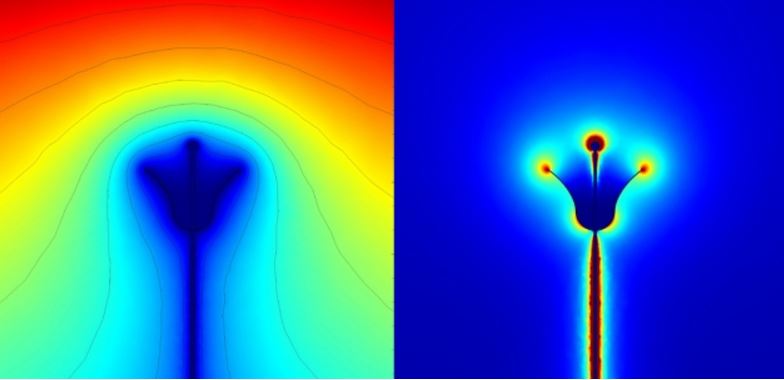Bumblebees know flowers are near because they have tiny hairs that vibrate, responding to electric signals from the flowers. This biological ability to perceive natural electrical stimuli – electroreception – is widespread in the animal kingdom, especially among marine creatures, given that salt water is a better conductor than air.
Scientists from the University of Bristol have had an article on this study accepted for publication in the journal Proceedings of the National Academy of Sciences (PNAS).
Experts have long-known that flowers communicate with pollinating animals by emitting electric signals, just how bumblebees detect these fields has eluded them, that is, until now.
 The bumblebee is covered in body hairs. (Image: duke.edu)
The bumblebee is covered in body hairs. (Image: duke.edu)
Lasers used to study vibrations
Study leader, Dr Gregory Sutton, a Research Fellow in the University of Bristol’s School of Biological Sciences, and colleagues used a laser to measure vibrations. They found that both the bumblebees’ hair and antenna deflect in response to an electric field.
However, they also found that the tiny hairs move much faster and with overall greater displacements.
The scientists then looked at the insects’ nervous system, and found that only the hairs alerted their nervous system to this signal.
Their findings suggest that electroreception in insects is probably much more widespread than initially thought.
 A flower’s electric field (right, with associated electric potential on the left) helps bumblebees determine where to find the most nectar. Until this study, we did not know how they did this. (Image: nature.com)
A flower’s electric field (right, with associated electric potential on the left) helps bumblebees determine where to find the most nectar. Until this study, we did not know how they did this. (Image: nature.com)
The bees’ electroreception is probably because their hairs are very stiff but also lightweight, which confer a rigid lever-like motion similar to what is found in the antennae of mosquitoes and spider hairs.
Feature likely similar in other insects
Dr. Sutton said:
“We were excited to discover that bees’ tiny hairs dance in response to electric fields, like when humans hold a balloon to their hair. A lot of insects have similar body hairs, which leads to the possibility that many members the insect world may be equally sensitive to small electric fields.”
Bees are vital pollinators of our crops, hence farmers and the science world are particularly interested in learning how floral signals are received, perceived and acted upon by these insects.
Studies into these relationships have revealed how flowers and their pollinators have evolved, and have led to the unravelling of this important network which keeps the Earth green.
A large number of marine animals have electroreception. Sharks, for example, have sensitive, jelly-like receptors that detect tiny fluctuations in electric fields in seawater, which helps them locate and then close in on their prey.
This study was supported by the BBSRC (Biotechnology and Biological Sciences Research Council) and The Royal Society.
Paper soon to be published: “Mechanosensory hairs in bumble bees (Bombus terrestris) detect weak electric field,” G. P. Sutton, D. Clarke, E. L. Morley, and D. Robert. Proceedings of National Academy of Sciences (PNAS). June 2016.
Video – Bee hair responding to electric signal
